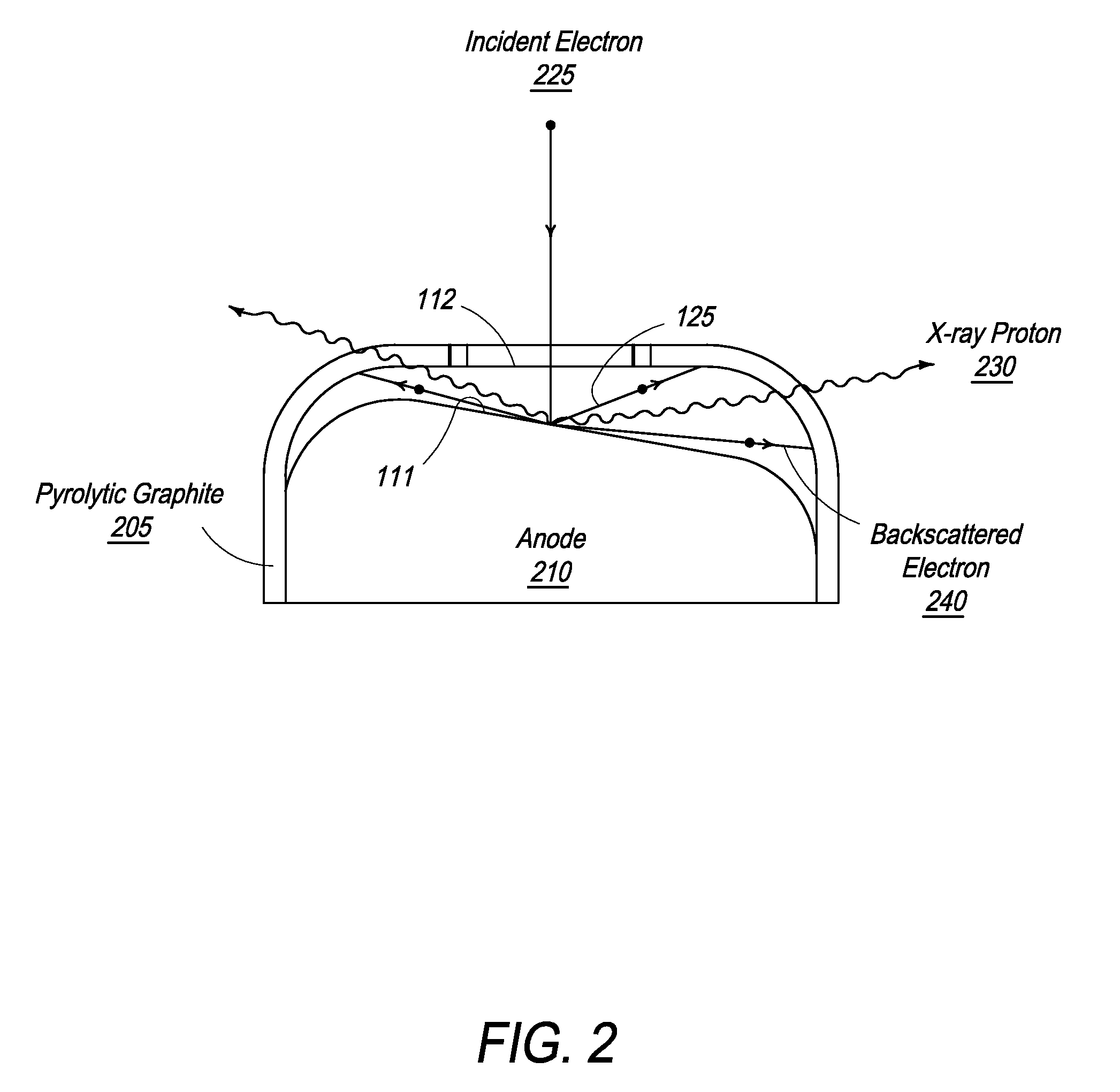Graphite backscattered electron shield for use in an X-ray tube
a backscattered electron shield and electron shield technology, applied in the field of x-ray tubes, can solve the problems of high voltage instability and potential tube failur
- Summary
- Abstract
- Description
- Claims
- Application Information
AI Technical Summary
Benefits of technology
Problems solved by technology
Method used
Image
Examples
Embodiment Construction
[0020]The present invention is directed towards an apparatus and method for preventing electrons, generated in an X-ray tube, from leaving an anode and entering the X-ray tube vacuum.
[0021]The present invention is also directed towards an apparatus and method for reducing the amount of backscattered electrons leaving the anode area that a) still allows free access of the incident electrons to the anode and b) does not impact the resultant X-ray flux.
[0022]In one embodiment, the present invention is directed towards a shield that can be attached to an anode while still allowing free access of incident electrons to the anode, wherein the shield is made of any material that will absorb or repel backscattered electrons while still permitting X-ray photons to pass through.
[0023]In one embodiment, the present invention is directed towards a pyrolitic graphite shield that can be attached to an anode while still allowing free access of incident electrons to the anode.
[0024]Thus, in one embo...
PUM
 Login to View More
Login to View More Abstract
Description
Claims
Application Information
 Login to View More
Login to View More - R&D
- Intellectual Property
- Life Sciences
- Materials
- Tech Scout
- Unparalleled Data Quality
- Higher Quality Content
- 60% Fewer Hallucinations
Browse by: Latest US Patents, China's latest patents, Technical Efficacy Thesaurus, Application Domain, Technology Topic, Popular Technical Reports.
© 2025 PatSnap. All rights reserved.Legal|Privacy policy|Modern Slavery Act Transparency Statement|Sitemap|About US| Contact US: help@patsnap.com



